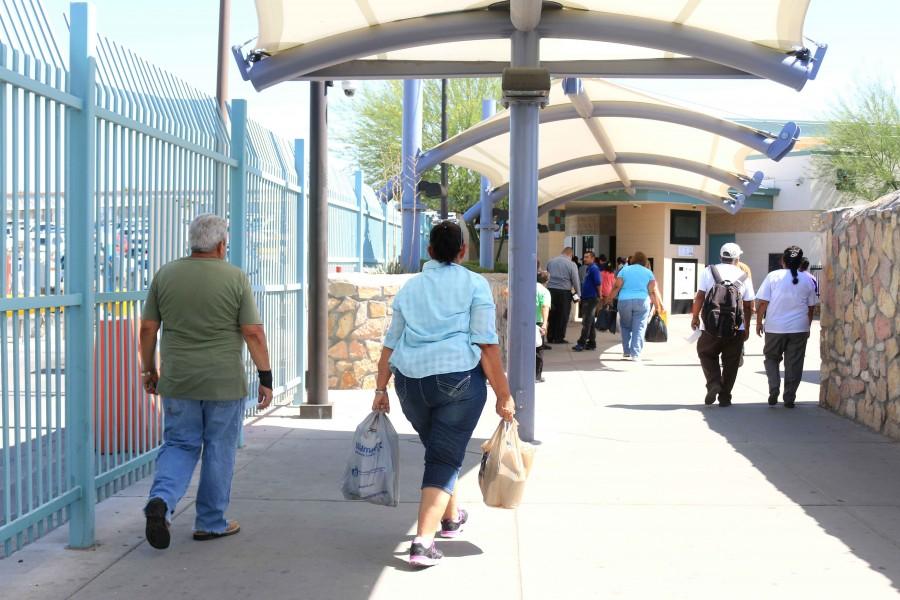Earlier this month, Texas Governor Greg Abbot approved a $310-million border security measure that will increase intelligence and operation efforts on the Texas-Mexico border.
House Bill 11 is the final piece of the massive $800-million effort aimed at securing the Texas-Mexico perimeter from human smuggling and cross-border traffic related crime. This bill also gives law enforcement the authority to set up southbound checkpoints within 250 yards of the border that require DPS officers to screen for guns and illicit cash headed to Mexico.
Dr. Josiah Heyman, professor of anthropology and director of the Center for Inter-American and Border Studies, said crime rates in the border region are at an all-time low and that the border security measure is moving the needed resources away from other parts of the state where crime rates are higher, such as in Odessa.
“The bill is trying to fix last year’s problems, while higher crime rates in the rest of Texas are not getting these deployments,” Heyman said.
In a press conference held earlier this month when he signed the bill, Abbot said there are more than 20,000 dangerous gang members associated with cross border traffic-related crime in the Houston area and that the measure would relieve the deployment of the National Guard on the Texas-Mexico border.
“The issues exist in the first place because we have a failed federal government that has refused to address the issues to tackle those problems,” Abbott said at the press conference. “Those are national, federal-based issues that we demand the United States federal government address and solve. Texas is doing what is can do by passing this border security plan.”
By creating a permanent presence of state troopers along the Rio Grande border region, the plan would impose tougher penalties for human smuggling crimes, and expedite the hiring of up to 250 Texas Department of Public safety officers, with a specific emphasis on hiring military veterans who have been honorably discharged over the next two years.
In addition, funding for the bill would include the development of a permanent $310-million transnational intelligence center which will be located in Hidalgo County on the border of South Texas to analyze the data.
Heyman said the measure could be problematic since it is shown that existing deployment of DPS on the border has resulted in a increase in traffic tickets in those areas as well as deportations.
“Previous DPS attempts have not been very efficient and it concerns me that a simple traffic stops can have a drastic outcome on our community,” Heyman said.
Among border cities, El Paso has managed to maintain a consistent rank of being one of the safest cities in the country with the lowest crime rate among larger cities.
Just last year, El Paso was ranked the number one safest city in America for the fourth year in a row, according to study completed by the CQ Press, which bases its calculation from crime rates reported for U.S cities with populations of over 500,000 residents.
In fact, the independent research firm has consistently ranked the city of El Paso among the top-three safest cities in the country since 1997.
Senior multidisciplinary studies major Guillermo Serrano feels the bill may help alleviate crime in some ways, but claims it’s pointless.
“We already have border patrol and police to take care of that, I don’t know why we need to spend money on more law enforcement, especially since border areas like El Paso are the safest in the country,” Serrano said.
Serrano also feels the bill was passed to stop illegal immigration in Texas and the United States primarily rather than for its purpose of reducing crime.
Heyman said the border is already being depicted as a dangerous region to reside in and the measure only adds to that stigma, which could damage the ability to attract tourists and maintain economic growth.
“If you see the news, you will hear that the border region is dangerous and it may be true, but on the Mexican side of the border,” Heyman said. “The U.S side of the border is very, very safe because the crime literally stops at the bridge.”
Opponents of increased border-security spending demanded that DPS officers produce statistics to prove that the massive border surge was working.
Since oversight options to report border crime and maintain the quality of public safety were dropped from the final draft when it went to the Senate, the department is only required to collect and release data on apprehensions and drug seizures performed by all law enforcement agencies participating in the surge including local and federal police.
According to reports collected from the Department of Public Safety, less than 10 percent of all arrests involved in smuggling crimes–guns, drugs and money–were made by DPS officers, while the remaining amounts were made by local law enforcement and customs and border protection agents.
Dr. Heyman said HB 11 is giving Texas its own version of a border patrol and feels the money should have been considered in other areas that could have benefited Texans and students in better ways.
“That’s a lot of money that could have been used for other things such as health services and education to help improve quality of universities and help reduce the tuition costs for students,” Heyman said.
Valerie Herrera may be reached at [email protected]







